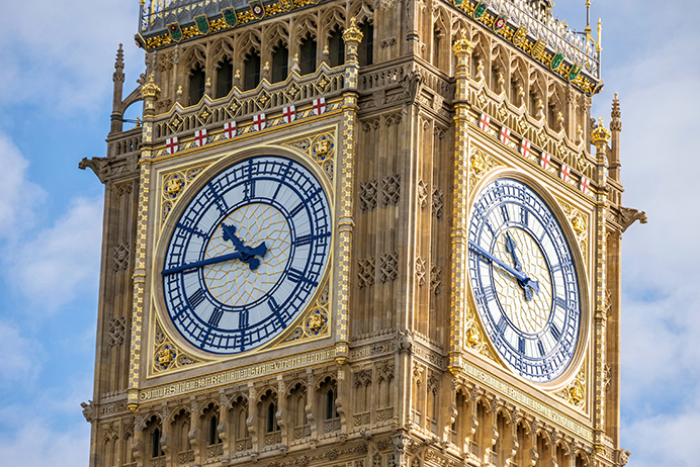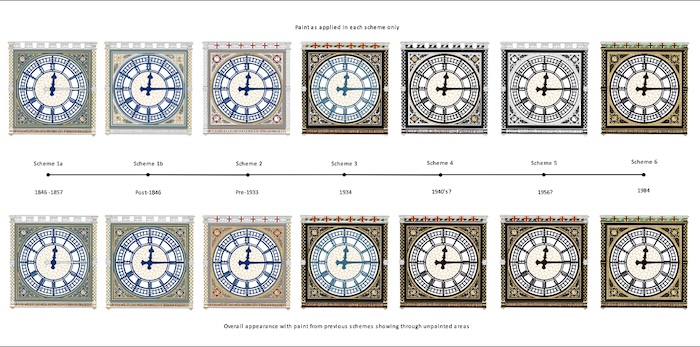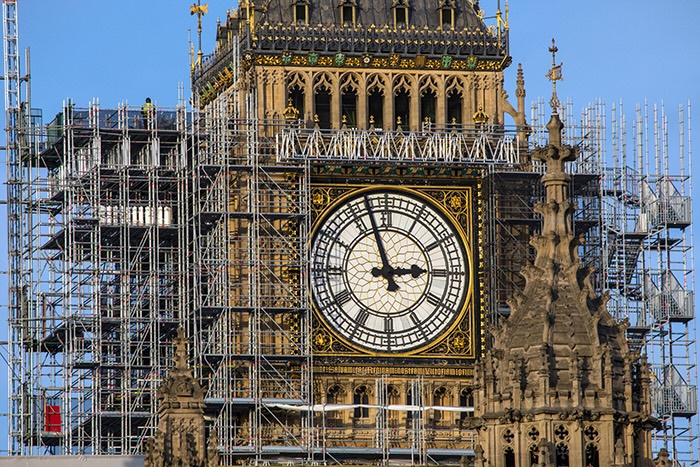
University team helped create brighter Big Ben
The restoration of Big Ben owes part of its success to specialist research carried out by Lincoln Conservation, part of the University of Lincoln, UK.
The work has now been shortlisted for the UK’s top architectural honour, the RIBA Stirling Prize and Lincoln Conservation’s role was to carry out detailed paint analysis to inform the redecoration of the world-famous clock face - as part of a wider multi-year restoration since seen by millions around the world.
The Elizabeth Tower’s transformation has been hailed for its meticulous restoration and historical accuracy. Cliveden Conservation, working for principal contractors Sir Robert McAlpine and UK Parliament,revealed evidence of multiple historic paint schemes on the clockface, including a vivid blue, red and gold Victorian palette.
To determine the original colours and sequence of schemes, 128 paint samples were taken from across the clockface and sent to researchers at Lincoln Conservation for microscopic stratigraphic and chemical analysis.
Comparing the results from the samples with archival documents - including original drawings by architect Sir Charles Barry, Lincoln Conservation confirmed that the Prussian blue colour found by Cliveden Conservation, was the original, long-lost colour scheme.
The discovery marked a dramatic change from the black and gold palette that had dominated since the 1930s. That shift to black was likely influenced by the effects of London’s smog and fading pigments, which left the clock face looking darker and smokier over time. As fashions changed, decorators appear to have responded to this ‘dirty’ surface by painting over the original Victorian scheme - meaning that generations had little clue of the original vibrant tones underneath.
Rhiannon Clarricoates, Co-Director of Lincoln Conservation and lead researcher on the project, said: “Undertaking research on a structure as iconic as the Elizabeth Tower was a huge responsibility, but also a great honour
“It was also incredibly exciting to slowly piece together the Tower’s appearance as it has evolved throughout the decades.”
Phillipa McDonnell, a member of the Lincoln Conservation team, added: “Researching an iconic landmark such as the Elizabeth Tower has been a highlight of my career. It is amazing to know that our research has uncovered the previous history of how the clock face has appeared over several generations and will now be a part of its story for years to come.”
While Lincoln Conservation’s involvement was one part of a complex and collaborative national effort, the Stirling Prize nomination has provided a timely opportunity to showcase the expert research and scientific analysis carried out by the University’s conservation and heritage specialists.
Lincoln Conservation is the commercial arm of the University of Lincoln’s School of Humanities and Heritage. It combines academic research with practical consultancy - offering students real-world experience while delivering conservation projects for clients.
The Lincoln Conservation team said: “Every aspect of this project was full of professionalism, passion and a sense of responsibility for our shared heritage. We are thrilled the project has been recognised at this level.”
Top picture shows the brighter, restored Big Ben face and surrounding paintwork while a timeline of the different paint schemes used over the years can be seen below along with a paint sample being analysed at the university. The bottom picture shows the face of Big Ben prior to the restoration.



